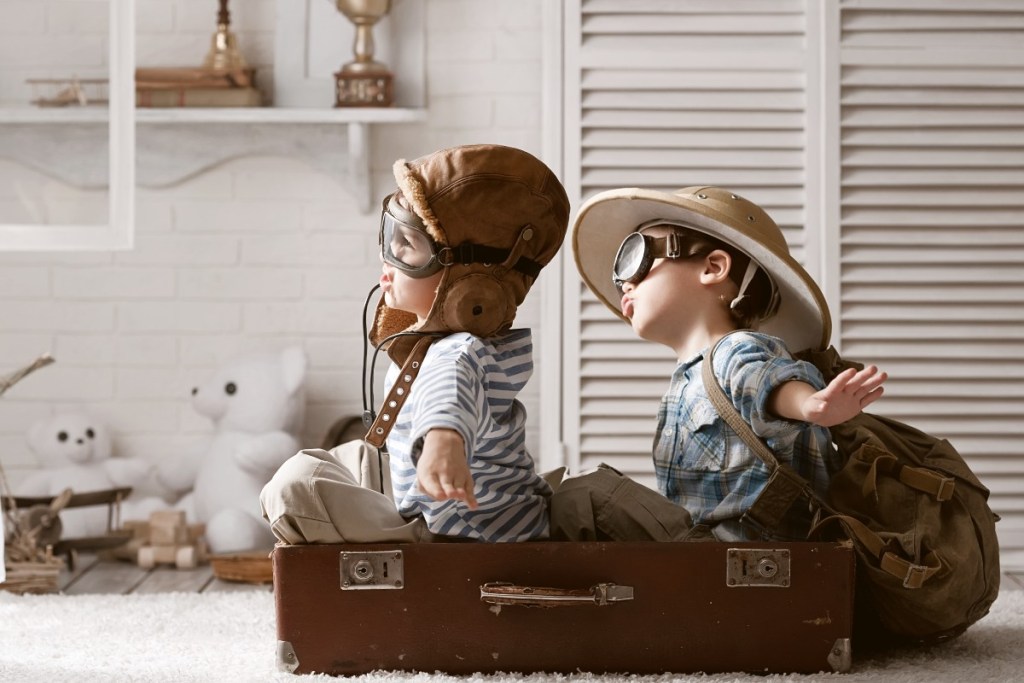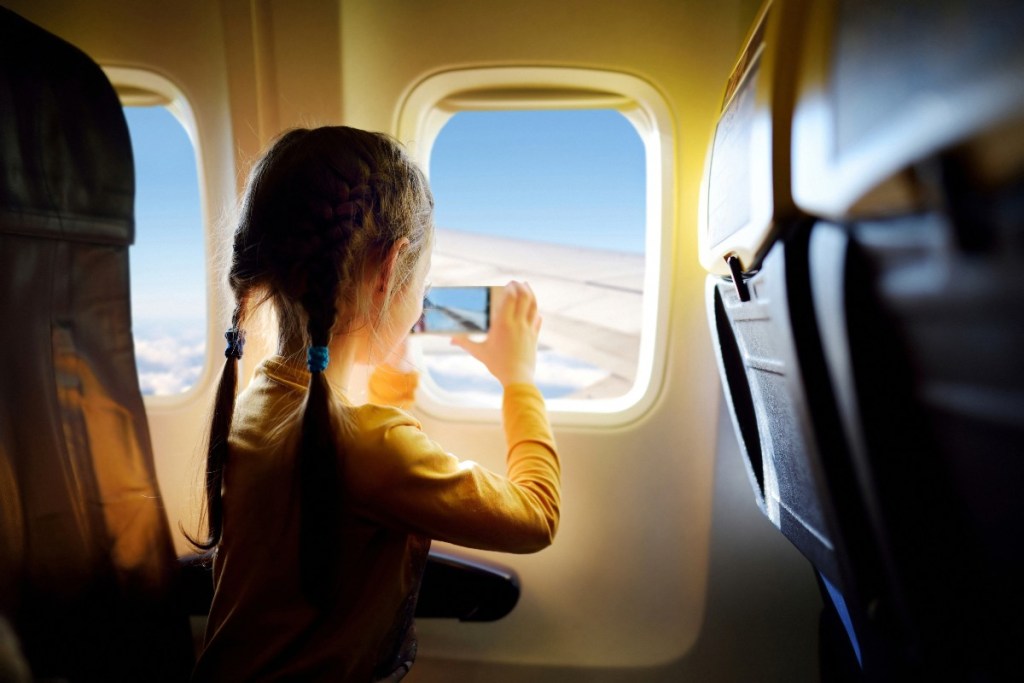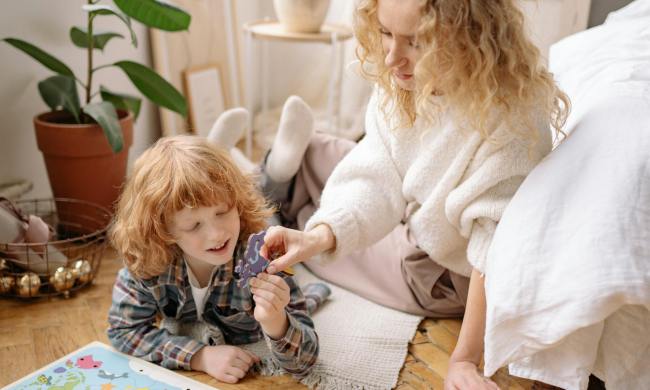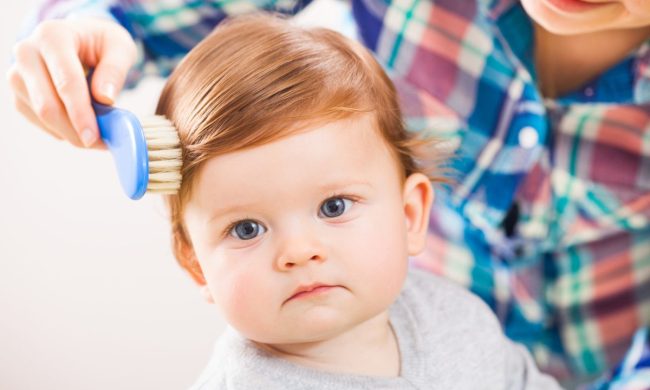Traveling with your children is equal parts work and pleasure. While taking a trip together allows you to have a unique experience with your kiddos, it also gives you, the parent, more bags to pack, more schedules to accommodate, more mouths to feed, and more tantrums to tame. And this can feel especially daunting if you’re are flying to your destination and back.
Kids don’t always do well when confined to a small space for a long time. Fortunately, you can take some steps (and prepare some carry-on items) to make the process a whole lot smoother and more pleasurable — for you, for them, and for other passengers, as well. Ready to jet-set with your crew? Here are our top nuggets of wisdom.

Get your kids excited about the flight
You might want to be strategic in your flight booking. Are your kids fresher in the morning? Do they still nap? Are they cranky late at night? Take all these things into consideration and time accordingly, if possible.
Additionally, get your kids excited for travel. Getting there should be half the fun (in theory). So, allow them to pack their own backpacks of goodies and get them pumped up for the experience from start to finish. To that end, lead by example — act excited for the flight and don’t talk about how you’re dreading it (even if you are).
Dress them for flying
Whether you are heading somewhere hot and tropical or cold and snowy, you will want to dress your kids comfortably in layers. It can get cold in the airplane cabin, so it’s smart to have options for shedding or adding.
BYO blanket and pillow
Naps are desirable during a flight. Try to encourage your kiddos to rest and relax (and close their eyes for an hour or so!) by making them as comfortable as possible. Make sure they have a small pillow and a cozy blanket for cuddling up.
Pick your seat with thought
All plane seats are not created equal. Choose your position wisely. If you have an energetic toddler, you might opt for an aisle seat, so you can get up and down and pace without disrupting other passengers.
Pack a backpack
Allow your children to pack their own mini backpack chock-full of in-flight essentials. Kids love to be trusted with tasks, and they enjoy taking responsibility for themselves. Plus, they’ll have a good time picking out their favorite must-have toys and trinkets.

Get some “busy” items
You’ll definitely want to have some busy work on hand to keep your children entertained: Books, activity sheets, crayons and coloring books, and small toys (think action figures or Hot Wheels) are a good starting point.
Prep snacks
Kids get hungry — or they get bored and then think they’re hungry. Either way, it’s wise to have some snacks at the ready; those plane peanuts or pretzels aren’t going to cut it. Try to avoid sugary, processed treats and stick with healthy munchables: baby carrots, apple slices, cheese sticks, and crackers.
Kids will want drinks, as well. The good news: You can pack your own healthy sips without worrying about getting them through security. Per the TSA, bottles or sippy cups of water, juice, or formula on a flight are exempt from the regular-liquids rule.
Be ready to handle air pressure and volume issues
Sudden altitude changes can cause uncomfortable or painful pressure in the middle ear. Most kids will generally experience this during takeoff or landing. Chewing or sucking can help alleviate this achy feeling. If you are traveling with a baby, try giving them a pacifier, a bottle, or the breast. Bigger kids can try drinking with a straw. If they’re old enough to have gum, chewing and swallowing saliva can help, too.
It can get loud in the cabin of an airplane. If your child is sensitive to noise, consider bringing kids’ noise-canceling headphones.
Know what to do if your child becomes disruptive
Your child will inevitably get impatient or fussy on a long flight. It’s best to keep your cool during midair meltdowns. Have some tricks up your sleeve — a new sticker book, an extra treat, or a special surprise. The excitement may diffuse a tantrum in the making. And if it doesn’t? Take a deep breath and move forward with empathy. Allowing yourself to get agitated will elevate the situation. You can, of course, apologize to the other passengers around you, but don’t shame your child for feeling their feelings.
Throw screen rules out the door
If the plane has mini televisions built into the backs of chairs, your kid will be instantly enthralled! Allow them to enjoy this special privilege. No seat screens? No problem! You can bring your own. If there is ever a time to allow your child to use the iPad or play with your phone, it’s during a long-haul flight.
Make friends with the other passengers
Let’s be honest: No one wants to be seated on a plane next to a bunch of rowdy children, but other adults will be able to empathize with your situation — especially if you are visibly doing your best to keep your kiddos calm and behaved. Smile at others, be kind, and respond to conversation prompts — a little effort goes a long way.
Curb seat kicking
If you’ve ever sat in front of a child on an airplane, you know that those little feet can barely contain themselves. Be sure you pay attention during the flight to ensure your budding Rockette is not starting a one-person kick line. Better yet, if you are traveling with a partner or second adult, consider booking one seat in front of where your energetic child will be positioned. That way, your child will — at least — be kicking the seat of a friend or loved one.
Taking kids on a plane can be nerve-racking. It can also be a special experience. Make sure you have planned wisely and are prepared with plenty of distractions, snacks, and in-flight essentials. There may be some tears shed (mostly from you), but at the end of your turbulent experience, you’ll have the reward of a vacation waiting. Good luck!


